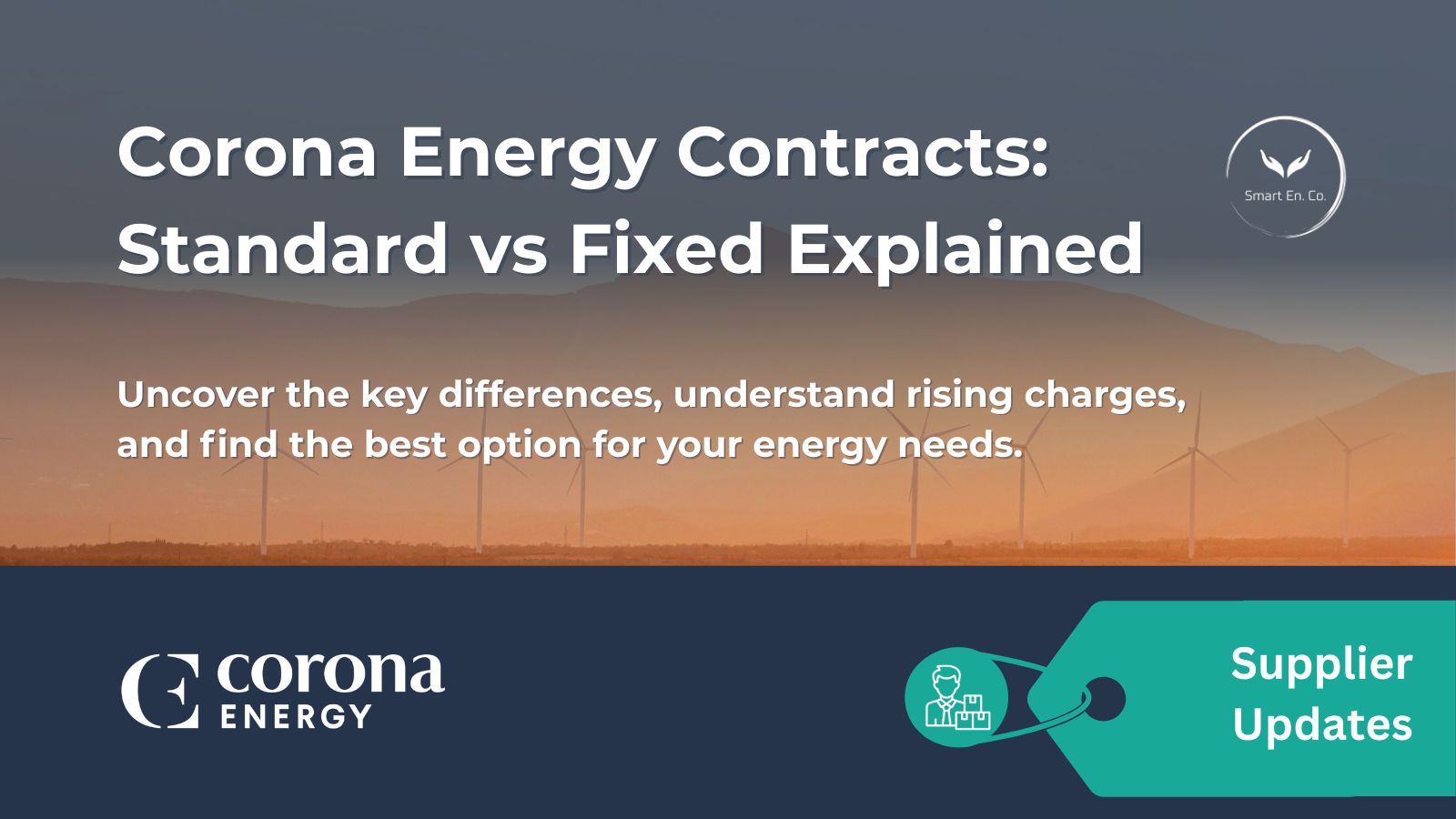Choosing the Right Electricity Contract: Corona Energy’s Standard vs Fixed Options

When it comes to selecting an electricity contract, understanding the fine print can save you money and hassle over time. Corona Energy offers two main types of contracts—Standard and Fixed—that cater to different needs. In this post, we break down the differences, explore the impact of rising Non-Commodity Charges (NCCs), and help you decide which option best suits your situation.
🔍 Understanding the Two Contract Types
📉 Standard Contracts
Key Features:
- Included Costs with a Twist:
The unit rate in a Standard contract bundles several costs such as Distribution Use of System (DUoS), Feed-in Tariff (FiT), Renewables Obligation (RO), Transmission Network Use of System (TNUoS), Balancing Services Use of System (BSUoS), Contracts for Difference (CfD), and Capacity Market (CM).
- Pass-Through Charges:
If the actual costs exceed the estimated amounts, the extra charges are passed directly on to you. This means that if market conditions shift or new fees arise, your bill could unexpectedly increase. ⚠️
- Variable Standing Charge:
Notably, the standing charge in the Standard contract is variable and can change month to month, adding further unpredictability to your overall costs.
Pros and Cons:
- Pros:
- Lower upfront unit rate 💰
- Potential short-term savings if pass-through costs remain stable
- Cons:
- Risk of unexpected increases due to variable standing charges and pass-through costs
- Less budget certainty over the contract term
🔒 Fixed Contracts
Key Features:
- Price Certainty:
With a Fixed contract, Corona Energy locks in both the unit rate and the standing charge for the full duration (typically 2 years). This means your basic costs remain predictable regardless of market fluctuations.
- Limited Pass-Throughs:
While the majority of costs are fixed, any new industry charges or regulatory changes after the contract begins may still be passed through. These are generally less frequent and easier to forecast. ✅
Pros and Cons:
- Pros:
- Predictable energy bills, which aid in budgeting and financial planning
- Peace of mind from avoiding sudden price hikes
- Cons:
- Higher upfront cost, meaning you pay a premium for stability
💡 A Quick Comparison Table (Based on 100,000 kWh Usage Over 2 Years)
| Product Type | Term | Unit Rate (p/kWh) | Standing Charge (£/year) | Estimated 2-Year Cost | Risk Factor |
|---|---|---|---|---|---|
| Standard | 2 years | 19.8195 | 75.9452 (variable monthly) | ~£19,971.39 | ⚠️ Variable costs & pass-through charges may increase your bill |
| Fixed | 2 years | 21.3576 | 76.7342 (locked in) | ~£21,511.07 | 🔒 Stable pricing with only new charges potentially added |
Calculations: For Standard, the cost is computed as 100,000 kWh × (19.8195 p/kWh ÷ 100) plus 2 years × £75.9452. For Fixed, it’s 100,000 kWh × (21.3576 p/kWh ÷ 100) plus 2 years × £76.7342. These figures are approximate and based on current offers. Always check with Corona Energy for the latest details.
Not sure if you're on a Fixed or Standard contract?
Get in Touch with Our Experts for clarity!
📈 The Impact of Rising Non-Commodity Charges (NCCs)
In recent years, many customers have noticed a significant rise in Non-Commodity Charges (NCCs), which cover additional costs beyond the basic energy price.
What Are NCCs?
- Distribution and Transmission Fees:
Charges like DUoS and TNUoS help fund the maintenance and upgrade of the energy network. Investments in grid modernisation often lead to higher fees.
- Regulatory and Industry Costs:
Fees associated with initiatives such as the Renewables Obligation (RO) and Contracts for Difference (CfD) can vary as governments adjust policies to meet environmental and market demands.
- Pass-Through Mechanism:
In Standard contracts, any unexpected increases in these charges are directly passed on to the customer. This can significantly impact your overall bill if NCCs continue to rise.
For Fixed contracts, while the base costs are locked in, any NCCs introduced after the contract starts may still apply. This provides some level of protection, but the risk of increased charges remains.
Why Are NCCs Rising?
- Infrastructure Upgrades:
Modernising the grid requires substantial investment, with costs often passed to consumers. 🏗️
- Regulatory Changes:
As policies evolve to promote renewable energy and reduce emissions, additional fees may be imposed. 🌱
- Market Fluctuations:
The overall cost of operating and maintaining the energy grid has increased, driving up these charges over time. 📊
Want a deeper dive into why NCCs are on the rise?
🤔 How to Decide Which is Right for You
When choosing between these contract types, consider the following:
- Risk Tolerance:
Are you comfortable with potential fluctuations in your bill? If so, the Standard contract may be suitable—if you remain vigilant about rising costs.
- Budget Certainty:
If you need predictable expenses for your budgeting or financial planning, the Fixed contract might be the better option despite its slightly higher upfront cost.
- Market Trends:
Staying informed about industry trends, such as rising NCCs, will help you understand the long-term implications of your choice.
Ready to explore your options?
🚀 Final Thoughts
Both contract types have their merits. The Standard contract might offer lower upfront rates but comes with risks of variable costs and rising NCCs. In contrast, the Fixed contract provides stability and peace of mind by locking in costs—even if it carries a premium.
By understanding these factors, you can make a more informed decision that aligns with your consumption patterns and financial planning.
Explore More Insights
Dive into more energy updates, market reports, and supplier insights tailored for your business


